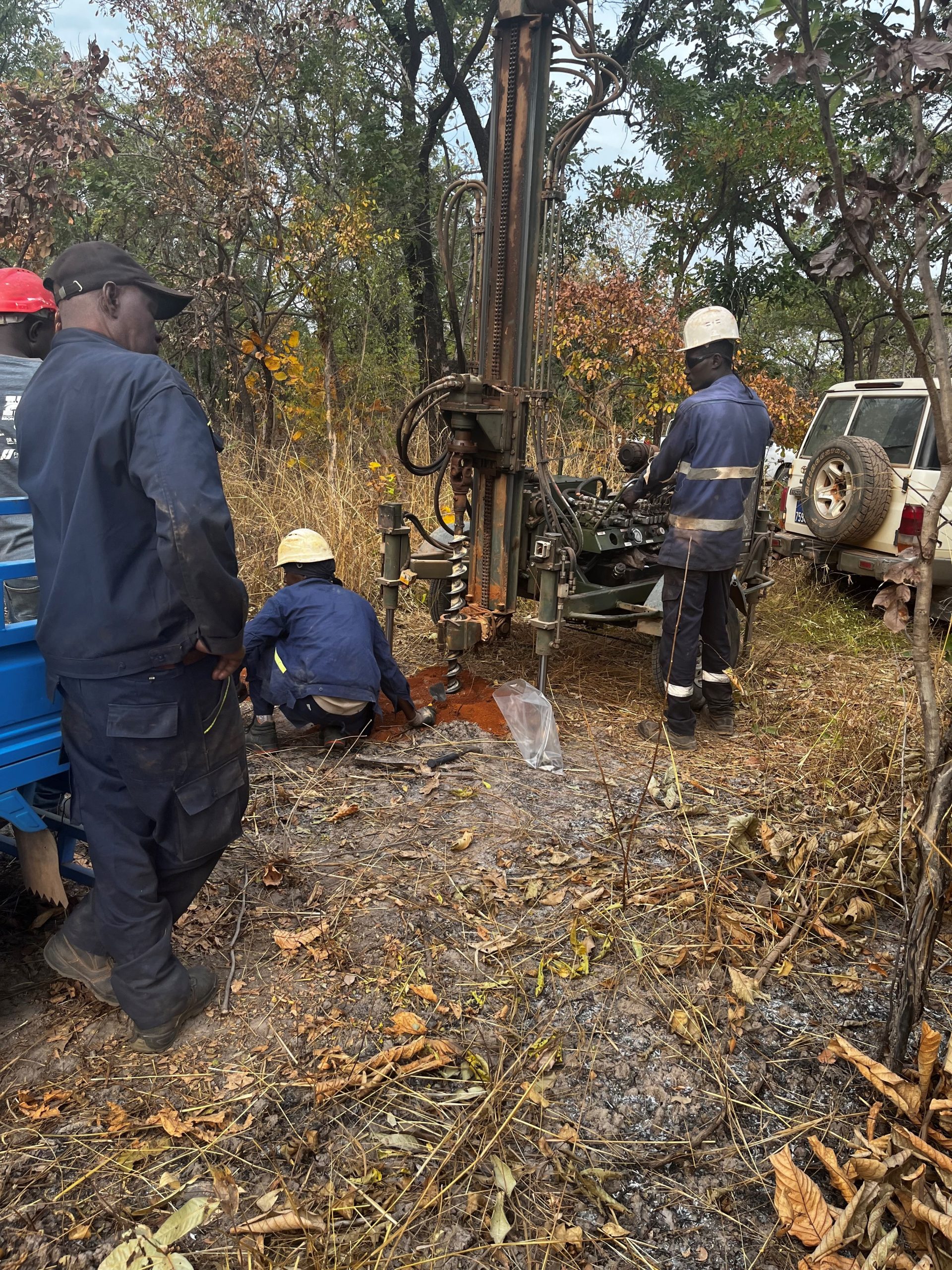
Saraya Uranium
Project Senegal
The Saraya uranium project in Senegal is a focus of Haranga’s exploration strategy. A fully funded drilling program is set to expand on what is a significant maiden JORC mineral resource at the project. Simultaneously we will be continuing other exploration works within the project area which spans 1,650km2.
A brief background on the Saraya Uranium Project

The Saraya Uranium Project is a JV between Haranga Resources Ltd (70%) and Mandinga Resources SARL (30%, free carried to PFS) and relates to permit PR02208 which is located in East Senegal.
The ground was partially explored by Areva and Cogema prior to 2010 who reported that Uranium mineralisation occurs in structural corridors within an episyenite. Mineralisation is modelled on a Na metasomatic model1.
The surface geology at Saraya is masked by two to seven metres of lateritic hardcap, making it difficult to trace mineralisation from soil sampling. As a result 68,000m of historic drilling was completed in the permit area, 65,000m of which was in the Saraya deposit.
Haranga’s Mineral Resources Estimate completed in 2023

Grade calculated using a 250ppm bottom cut and 10,000ppm top cut Indicator kriging
Haranga has verified the historic data with the completion of 22 diamond core holes for 3,021m, resulting in 45 uranium intercepts for 524m of mineralisation, with a weighted average grade of 775ppm eU3O81.
The MRE2 is based upon 541 drill holes combining historic exploration programs with the more recent (2022) drilling completed by Haranga.
The MRE is characterised as 100% Inferred (JORC 2012) but could be upgraded with successful metallurgical testwork.
The model is data bound and possible extensions exist along strike, downdip and down plunge. 30RL is approximately 160m below the surface at Saraya.
1 Refer to ASX Announcement 28 Feb 2023 Drill Results Confirm Wide, Shallow, High Grade Uranium
2 Refer to ASX Announcement 25 Sept 2023 Significant Maiden High Grade Uranium Mineral Resource
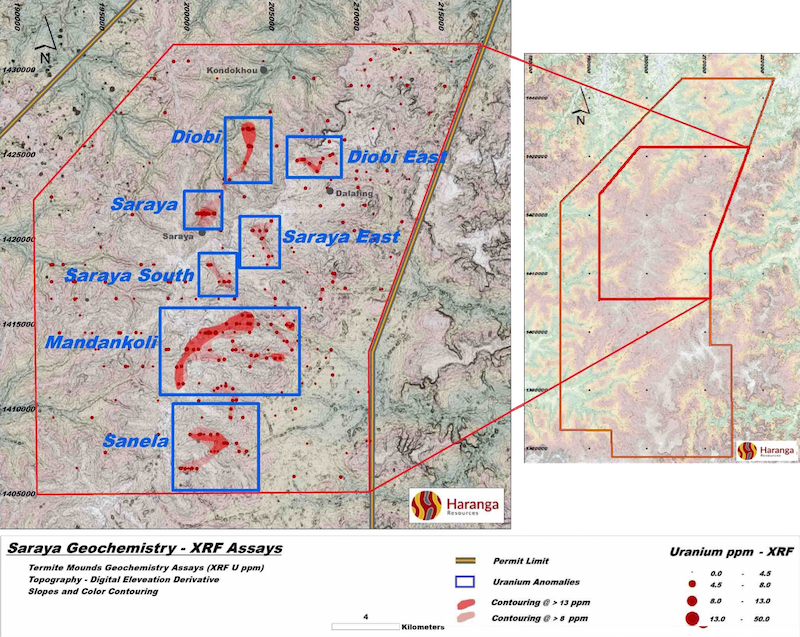
2024 – New Uranium Anomalies Announced
Saraya South infill termite mound sampling confirmed new anomalies – the main uranium anomaly identified (named ‘Katafata’), covers an area of 600m by 1000m on the infill grid (200m x 50m).
From the 10 permit-scale blocks (Total 13 blocks) assayed so far, 9 infill grids have been defined – from the 4 initial infill grids sampled and assayed, 7 uranium pXRF anomalies have been delineated.
The uranium concentrations in the Katafata anomaly record up to 11ppm, about 5 times higher than the 2ppm background levels. The anomaly is situated at the foothill of the Eastern Saraya laterite plateau, suggesting a potential continuation under the plateau Westward. Similar geology to Haranga’s known Saraya deposit – host to a JORC 16.1Mlb U3O8 Inferred mineral resource @ 587ppm.
Auger drilling of the Saraya South anomalies is planned for February 2024 to further understand the extent and nature of the anomalies – Auger drilling results from Diobi, Sanela and Mandankoly prospect area are also due in February.
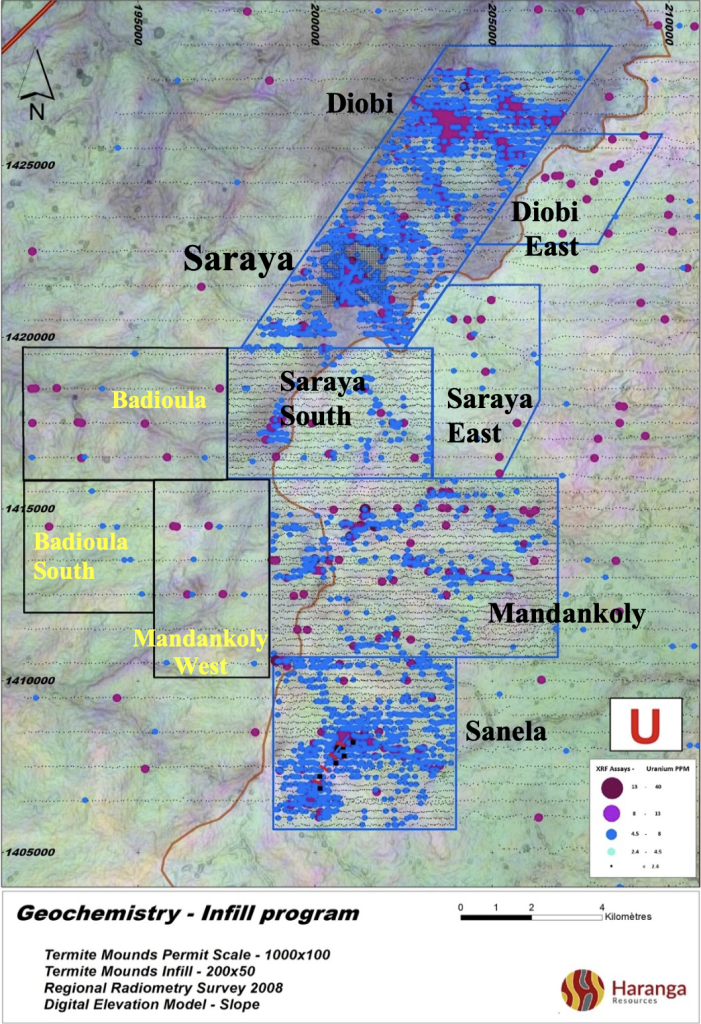
Termite Mound Sampling
More results are being delivered by the newly acquired XRF Vanta-M from Olympus, both at 200m by 50m infill scale and the wider regional scale of 1000m by 100m. After Sanela, Saraya NNE and Mandankoly, Saraya South is the fourth infill prospect to deliver positive results.
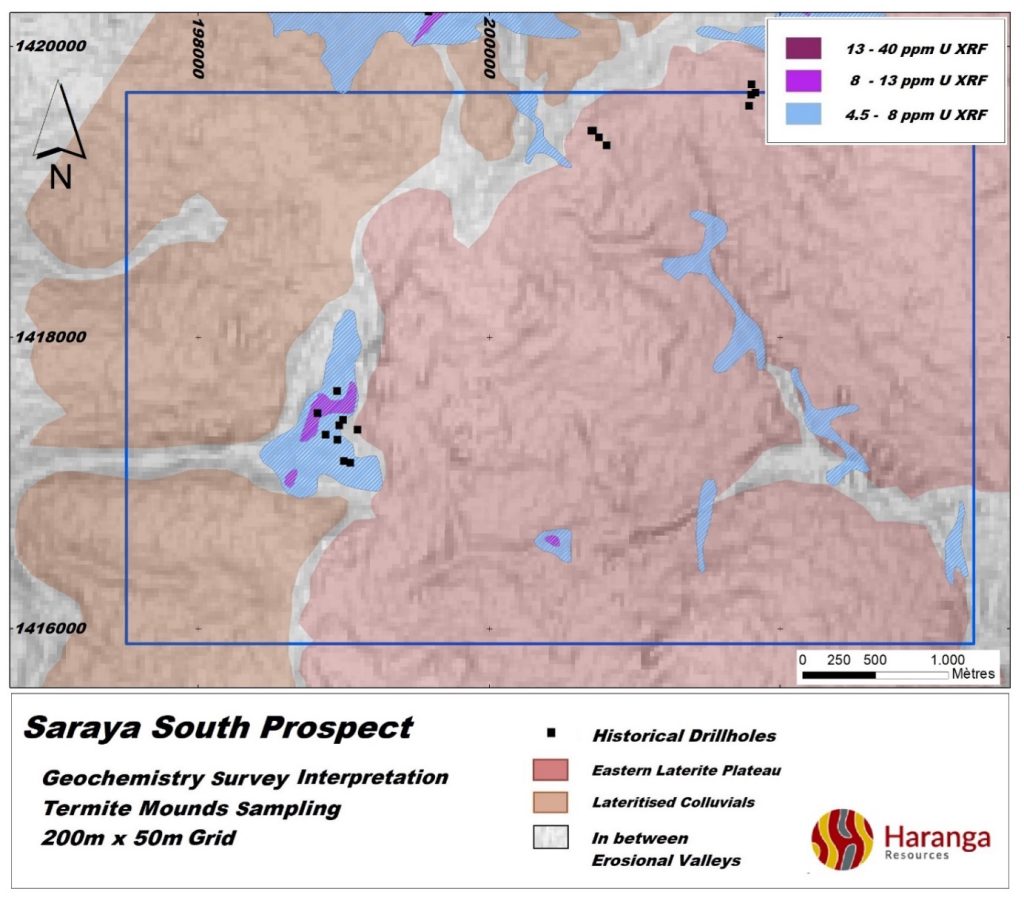
Prospects in close proximity
Outside of Saraya there are several known anomalous areas that have had some attention. Mainly surface sampling but some (Diobi, Mandankoli and Sanela) have had historic drilling.
At least three of the identified anomalies exceed the size of the Saraya anomaly at surface.
Diobi, Mandankoli and Sanela are the most advanced and orientation work is ongoing at Diobi and Mandankoli in preparation for potential drilling.
Termite mound sampling has allowed Haranga to overcome the laterite hardcap barrier, giving access to the saprock a medium for mobile elements (U, Au, Th, K, etc)
With 40% of the permit unexplored, Haranga still has numerous radiometric anomalies that require investigation.
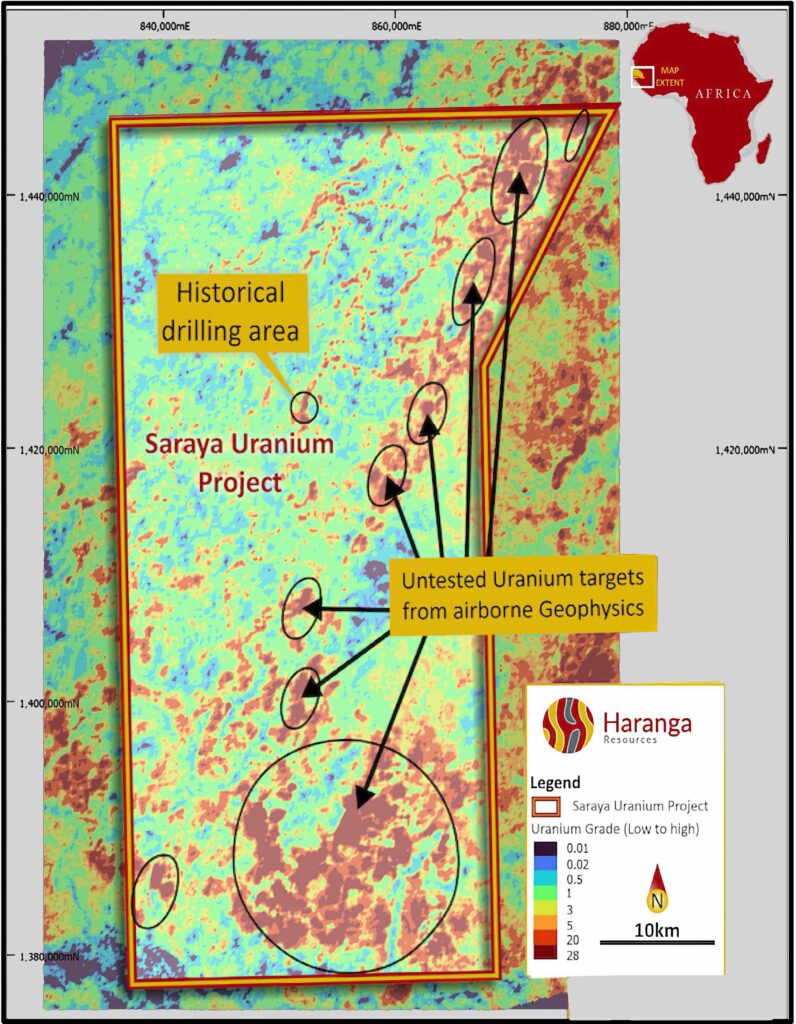
Radiometric plot showing anomalous locations away from main Saraya line.